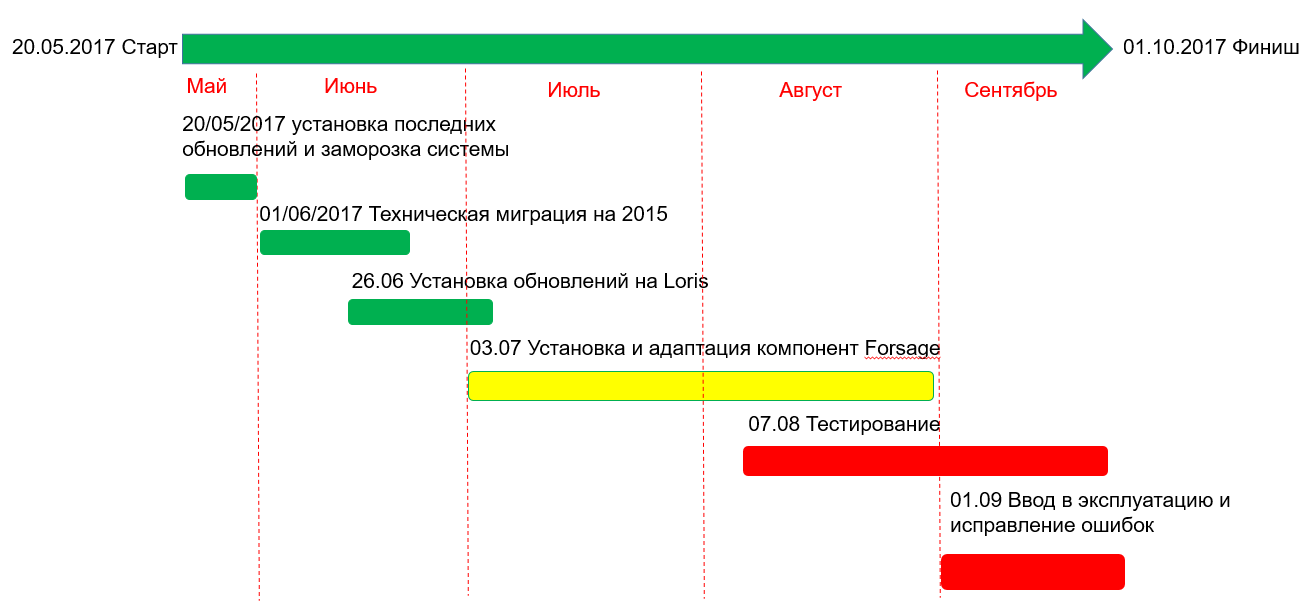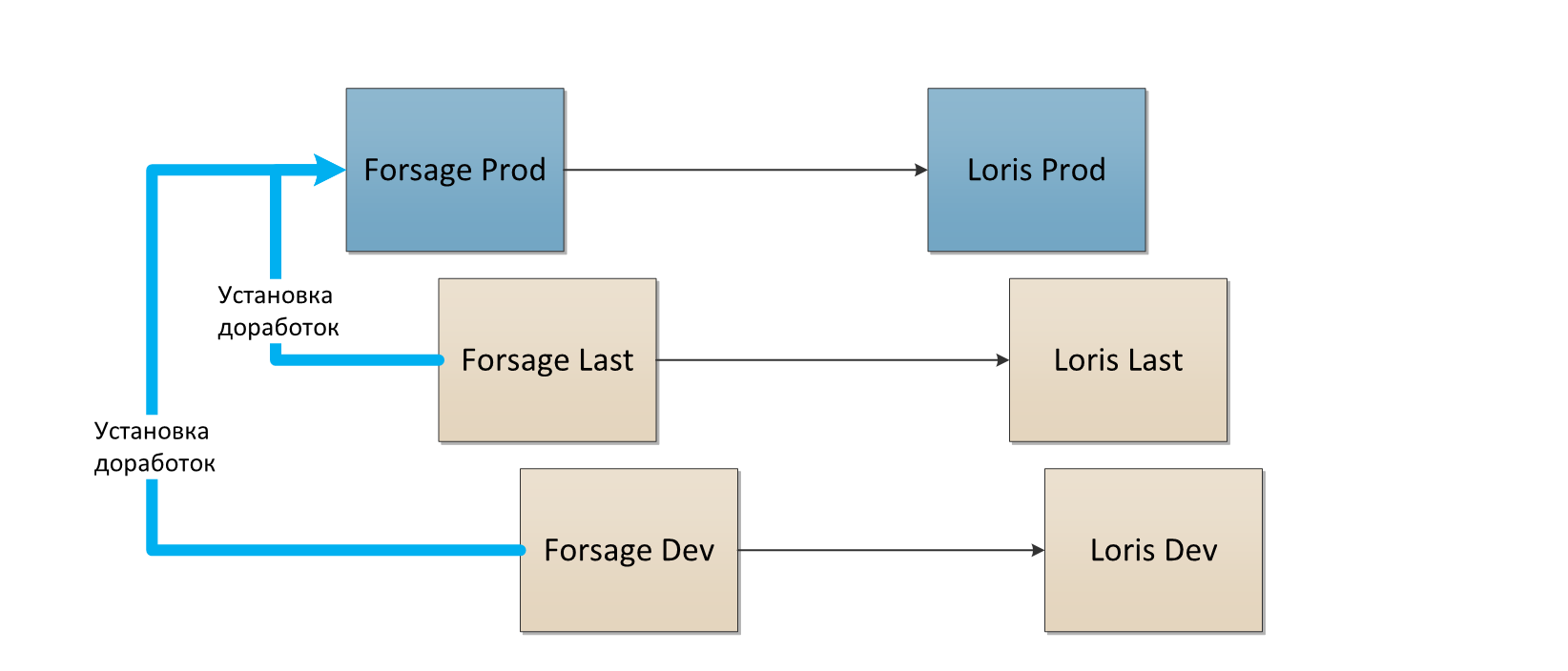Historically, in our DeltaCredit mortgage bank (in the summer we joined Rosbank and are now called Rosbank House) there were two CRM systems. Why and why - I will tell further.
There was asynchronous integration between them, which tended to break periodically, disrupting the workflow and driving the entire bank into deep depression, from IT to salespeople. In the end, everyone was tired of this as expected, and it became clear that the problem urgently needed to be addressed.
The main difficulty was to do this without interrupting the process. And this is with a load of 700 people, and even with external resources connected.
Under the cut - the story of two CRM-systems, which (spoiler), it was decided to combine into one.

Loris and Forsage. Where did the two systems come from?
The first of them was introduced in the bank in 2011. It was Microsoft Dynamics CRM 4.0, and it was named Loris.

Just a coincidence
It was created to interact with clients until the stage of issuing a loan: collecting and processing applications, underwriting, working with insurance and appraisal companies, planning a transaction and issuing a loan. It was made for us by a company, which we conventionally call X.
The second, separate CRM, had to be done for sellers, since Loris had a number of technical limitations at that time, and it was too slow. Therefore, in 2013, the second CRM was introduced based on Microsoft Dynamics CRM 2011, which was called Forsage.

Not just a coincidence
There were no developers inside the bank at that time, and Company Y did it for us. They did the integration between the systems. As I said, integration has constantly broken down.
In 2014, the bank decides to develop the development of "house" and hires two programmers to support Loris. Internal expertise is starting to grow.
In 2015, Loris is updated, first to version 2011, then to 2015.
Meanwhile, internal expertise is growing, in 2016 we already had 5 developers. This allowed us to abandon the services of company Y, after which the support fell on the shoulders of internal developers.
Project floris
In 2017, we came up with the initiative to combine the two CRM systems. In fact, we had two options: finalize the Forsage by updating it to version 2015, or combine the two CRMs. The thing was that in both systems - the same users. This means that, updating Forsage, we will have to spend a tidy sum, close to 15 million rubles, on licenses for actually existing people. But if you combine them on the basis of Loris, you won’t have to buy licenses. The savings when using the second option are obvious, and it was decided to create a unified CRM system, the merger project was called Floris.

In addition, to abandon Forsage in favor of combining two CRMs based on Loris, we were also prompted by errors that occurred in the first of the systems (cards were breaking), as well as the fact that support for Microsoft for Dynamics 2011 was ending.
Everything happened in a fairly short time: they started thinking about it in early 2017, in May they came up with a concrete proposal, from January to May they conducted a study. We evaluated the process of combining the two systems at 6 months. Time was needed so that there was no interruption of the system. In September they finished, in November they turned off the Forsage.

Unique story
We had two important limitations:
- Both systems should work constantly, there should be no interruptions;
- Forsage users are sales managers who, firstly, will not be able to independently test the functionality, and secondly, they react extremely violently to any interruption, even a very short one.
I had to work in such a difficult situation.
The first thing we did was update Forsage to 2015 on the test. Then they took all the objects and entities that are used in it, and poured into Loris (doubted to the last that it was possible). There is an interface, it's up to the functionality.
We thought: is all this functionality needed, is everything used? It’s useless to ask sellers, so we went to the trick: we included logs throughout Forsage to understand what was being used and what wasn’t. As a result, it turned out that about 40% of the functionality of Forsage no one uses, which means that you can refuse it. And step by step, they turned off unnecessary blocks and collected feedback.
The remaining 60% of the functionality was adapted for Loris. It took 3 weeks and the resource of one Junior. Adapted functionality poured into Loris.
After that, we made the integration mechanism from Forsage 2011 to Loris 2015 - made synchronous integration (we will discuss this in more detail in the continuation of the article, since only thanks to synchronous integration this project became possible). Now it was possible, without disabling Forsage, to fill all the necessary functionality into Loris and transfer users there in batches.



A good business analyst is worth its weight in gold
The most interesting thing began - the transfer of users “live”. It was necessary to create a positive attitude towards the project among salespeople so that everything went smoothly and without problems.
And here we were just incredibly lucky - we were allocated a chic business analyst who is not only very professional, but also (drum roll) used to work as a sales manager, knew all of them and knew how to speak the same language with them.
We took seriously the coverage of the Floris project in order to create the most positive atmosphere:
- They came up with a logo for the project - they took the famous cat with the inscription "Whack" as the basis;
- hung posters around the office with information on how the project was progressing;
- explained that if the user does not like something in the new system, we roll back everything and correct it;
- to everyone who has already switched to the new CRM (actually supplemented by Loris), we glued a sticker on the monitor with the inscription “Forsage + Loris = Floris”.

While we were transferring bundles of users and their functional business analyst removed feedback from salespeople. If someone showed errors, we rolled back the transfer and corrected the errors. In total, about 300+ errors were identified and fixed.
The last stage went to two external systems, which easily began to work with already run-in functionality.
Summary
- We managed to marry two CRMs in a relatively short time without interrupting work;
- The company saved 15 million rubles by updating Forsage licenses and further support;
- The landscape of IT systems has been simplified;
- Completely house project;
- Only 4 people worked on it: 2 developers, an architect and a business analyst;
- They managed to mitigate the negative with the help of a visual company and competent business analyst.